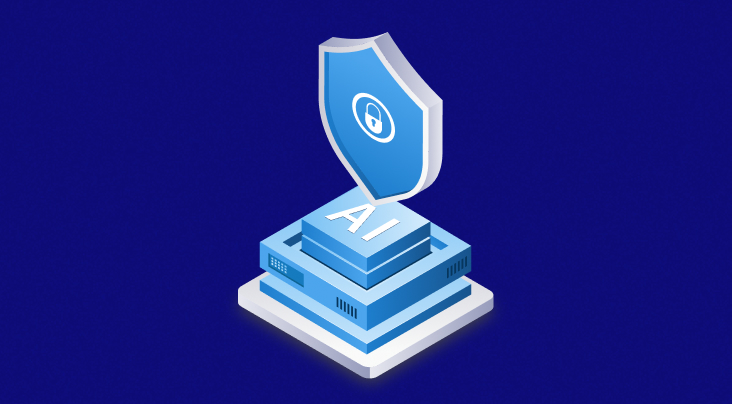In modern enterprises, data assets are stored “everywhere” across hybrid multi-cloud platforms and accessible by teams and AI systems for various purposes, ranging from training to validation. This arrangement fuels both innovation and precise decision-making, but can be a highly concerning issue for organizations from a security perspective if not effectively dealt with. Hence, securing sensitive data is not simply an IT assignment; it carries a business imperative.
To do so, organizations must adopt a layered and proactive approach that detects and prevents risks and implements a governance framework covering data access and compliance with relevant obligations per various regulations.
Read on to learn more about the nine core data security technologies enterprises must consider as the backbone of their data protection strategy.
The 9 Core Data Security Technologies for Enterprises
The nine core data security technologies that enterprises can consider for their operations are as follows:
1. Data Security Posture Management (DSPM)
Despite being a comparatively new discipline, it has escalated rapidly in both its importance and relevance thanks to its unparalleled ability to offer visibility related to where an organization’s sensitive data resides, the connected workflows, who and what has access to it, and most importantly, the identification and mitigation of all the risks that are mapped.
For organizations operating in a multi-cloud environment, DSPM provides a centralized layer of granular data intelligence that enables continuous monitoring of potential data exposure while also ensuring the enforcement of security policies meant to counter the possibility of such exposure.
In the face of both increasing regulatory scrutiny and data sprawl, DSPM can serve as a vital tool in helping security and compliance teams prioritize remediation efforts in a manner that meets both internal governance parameters and external regulatory audit requirements.
2. Data Loss Prevention (DLP)
DLP solutions are designed specifically to address the issue of unauthorized data transmission through the proactive monitoring of endpoints, emails, cloud applications, and connected networks for personal identifiers or intellectual property. Consequently, this prevents such data assets from leaking outside the organization.
DLP enforcement involves a combination of data handling and management policies designed to prevent data breaches. Integration with modern AI-based analytic solutions improves its accuracy while greatly reducing instances of false positives. It can be of particular importance in highly regulated industries such as finance, healthcare, and cybersecurity, where data resources must be protected with extreme diligence.
3. Data Identification & Classification
Data identification and classification are vital tools that allow an organization to locate and tag sensitive data assets based on predefined or customized criteria and metrics, such as jurisdiction, level of sensitivity, or status as first-party or third-party data. Such metrics and criteria can then be leveraged as the foundation for access controls, retention policies, and audit trails.
Modern AI-powered data identification and classification tools can scour through petabytes of both structured and unstructured data, enabling highly effective data risk management and any other measures needed to ensure compliance with major data privacy laws like the GDPR, HIPAA, and CPRA, among others.
4. Data Authentication & Authorization
Data authentication verifies the identity of the person accessing the data, while authorization controls monitor their permissions related to what they’re allowed to do with that data. Together, they form the frontline of any organization’s data security posture regarding unauthorized access and insider threats.
These include measures such as multifactor authentication (MFA), single sign-on (SSO), attribute-based access control (ABAC), and role-based access control (RBAC), among others. Each of these has become a standard within enterprise environments as it ensures that any and all access to sensitive data is granted solely based on identity, role, context, and policy.
5. Data Encryption
Data encryption is arguably the most elementary yet the most important aspect of any organization’s data security and protection efforts. It ensures data remains unreadable to unauthorized users even in scenarios where such data is unlawfully accessed or intercepted. It applies to data at rest, in transit, and in use.
Such encryption can be leveraged to secure data exchanges across cloud infrastructures, third-party vendors, and internal systems. The exact encryption protocols can range from basic AES-256-bit encryption to lattice-based encryption for the most highly sensitive data assets.
6. Data Masking
Through data masking, organizations can obscure their sensitive data assets so that certain attributes can be used in development, testing, and analytics without exposing the actual data. This, in turn, allows for business agility in critical data-based decision-making without compromising the confidentiality of the data.
Most organizations use a combination of static and dynamic masking techniques to protect all their data assets, especially those shared with third parties or to be used in non-production environments.
7. Data Erasure
This technology may not be a matter of choice for organizations, as most data regulations require organizations to have mechanisms in place to honor users’ data deletion requests. Data erasure tools ensure that when such deletion is in order, it can be carried out in a manner where the disposed-of data is no longer recoverable, minimizing the risk of residual exposure.
Moreover, such data erasure steps can be completely automated to ensure efficiency when dealing with large data volumes and consistent data subject requests. Organizations can also leverage it to demonstrate accountability and compliance when fulfilling data subject rights.
8. Data Backup
It can happen. An organization can do everything by the book and take all the preventive measures possible, and yet an incident like a ransomware attack or accidental deletion of data occurs. In such instances, secure and automated data backups ensure business continuity as well as fast recovery.
By implementing effective backups, routine testing, and geographically distributed storage, organizations can ensure alignment of their recovery time objectives (RTO) and recovery point objectives (RPO) within the context of their business processes.
9. Identity & Access Management (IAM)
IAM systems are vital in managing digital identities and their entitlements across an organization's systems, applications, and data infrastructure. They serve as the main control hub when managing and enforcing access governance policies.
Embedded and leveraged properly, IAM can prove invaluable in reducing the risk of privilege abuse, obsolete/inactive accounts, and audit failures. Moreover, through the combination of DSPM with data access intelligence, IAM can provide critical contextual and risk-based access controls that are easily scalable alongside business growth.
Conclusion
Securing enterprise data involves more than just using isolated tools or static one-off policies. It demands a comprehensive strategy backed up by the deployment of appropriate tools that address issues of visibility, control, protection, and resilience.
DSPM, along with the other technologies mentioned above, can help organizations in this pursuit to meet regulatory requirements and address cyber threats while simultaneously enabling secure innovation.
Request a demo today and learn more about what Securiti’s DSPM has to offer your organization’s data security needs.












































